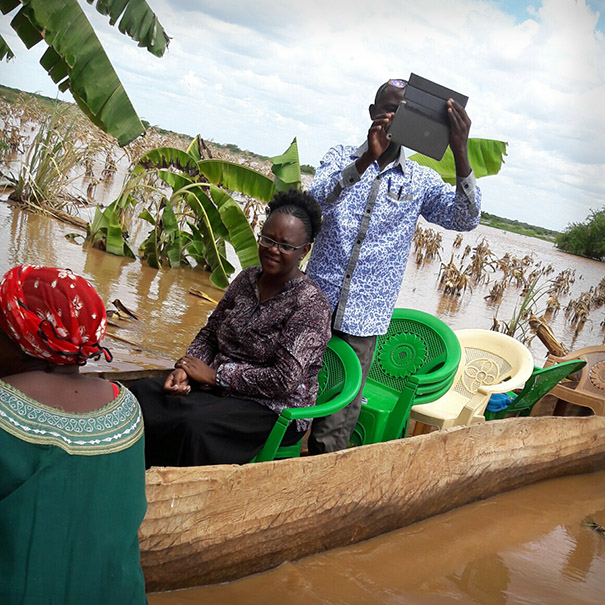
Caroline Njogu (seated) during the Tana River assessment with other members of the assessment team. Photo: courtesy Caroline Njogu
“World Humanitarian Day is an annual reminder of the need to act to alleviate the suffering. It is also an occasion to honour the humanitarian workers and volunteers toiling on the frontlines of crises. I pay tribute to these dedicated women and men who brave danger to help others at far greater risk.” – United Nations Secretary-General Ban Ki-moon
World Humanitarian Day is August 19. This year’s theme is “One Humanity,” which speaks to how our shared human experiences bind us across divides and create a common responsibility to demand action for the most vulnerable and at risk of being left behind.
This week, I’ve been spending a lot of time thinking about what World Humanitarian Day means to me as an Emergency and Disaster Risk Reduction officer with the CWS Africa team.
I have been in this position for six months, based in Nairobi. This may seem like a short time to already have meaningful reflections. On the contrary, it has provided me with a great opportunity to not only work with our partners in saving lives and reducing suffering in communities disproportionately affected by crisis. It has also meant helping address long-term factors that enable disaster-prone communities to better bounce back after a disaster.
One key highlight from my time with CWS so far was the privilege of representing CWS Africa – under the larger ACT Alliance umbrella – in a two-day DRR stakeholders meeting organized by the Kenyan National ministry of Interior and Coordination. The meeting was aimed at planning and identifying key priorities for DRR in Kenya in 2016 ahead of the formulation of a DRR National Plan of Action that would contextualize and operationalize the Sendai Framework in the country.
Another major milestone was carrying out the Emergency and DRR Assessment in the flood-prone Tana River delta in Kenya. In the current situation, the floods act as something called a threat multiplier. That means that families already face extensive challenges – a lack of clean water, poor agricultural yields and malnutrition, to name a few – that are exacerbated by flooding. Our assessment aimed to help us better plan our Disaster Risk Reduction activities in the area for the new fiscal year, including innovatively addressing livelihood, financial savings, education and other community needs.
Of course, no discussion of CWS humanitarian response in Africa is complete without talking about our ongoing response to the Burundi refugee crisis. CWS and our ACT Alliance partner Tanganyika Christian Refugee Service are providing the much-needed support to Burundian refugees living in Nduta and Mtendeli refugee camps in western Tanzania. Our response focuses on water, sanitation and hygiene, non-food items and psychosocial support. Through this response, I have participated in fast-tracking appeals with the ACT Alliance Africa regional office and carrying out assessments for scaling up the CWS response.
To be sure, our humanitarian work isn’t about crisis after crisis. Rather, it’s about learning from the communities that we partner with in order to provide sustainable and long term solutions. In this spirit, I recently toured CWS education and water projects project in Turkana County, Kenya, where I was able to interact with community elders and gathered rich traditional approaches to disaster risk management, with a view of integrating with modern approaches for enhanced community resilience building. Indeed I feel honoured to be part of the CWS family that seeks to eradicate hunger and poverty and to promote peace and justice around the world.
Caroline Njogu is the Emergency Response and DRR Coordinator with CWS Africa.
